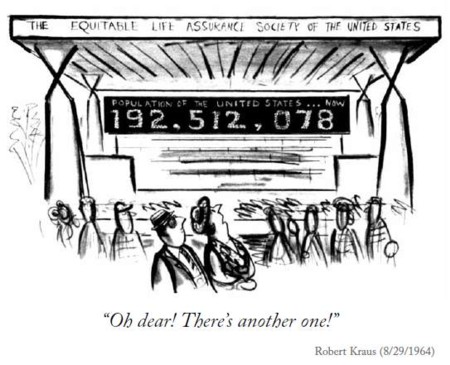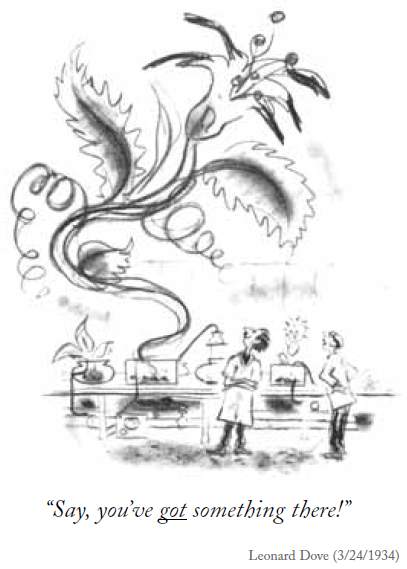The Environment
Welcome! Sulphur dioxide
Hello! Carbon monoxide
The air, the air
Is everywhere
Breath deep, while you sleep
Breath deep[28]
From biblical times until the Elizabethan era the human population of the planet is believed to have fluctuated between around 150 million and 400 million depending on food availability, disease and social stability[29]. With the advent of rationalism, leading to the application of science in engineering and medicine, exponential population growth in Europe and parts of Asia began in the 17th century.
By 1970 world population was approaching 3.7 billion and many people had become aware that human over-population was starting to threaten the planet's environment. Large areas of forest and native plants had already been cleared for food (grains and grazing) and the production of mind altering substances (for example the production of tea, coffee, grapes and grains for alcohol, tobacco, coca and opium).

The use of fertilisers, insecticides, and the disposal of sewage was adding nutrients and poisons to streams that fed into the sea. Industry expanded rapidly on the back of population growth and technical innovation. It too had become very polluting.
Private cars, a luxury item in 1950, had become essential for residents of rapidly expanding sub-urban areas, replacing bicycles and public transport as the main means of urban transport. Indeed much of the earlier public infrastructure became uneconomic and was either subsidised or removed (trams). The burning of fossil fuels such as coal, oil and natural gas was beginning to increase the amount of carbon dioxide in the atmosphere at an alarming rate. A number of other greenhouse gases were also being generated in increasing amounts including fluorinated hydrocarbons (causing ozone layer damage).
Many commentators began to state the obvious; continued exponential growth was unsustainable.
In 1972 The Limits To Growth was published by The Club Of Rome, this projected that unless something was done population would continue to increase exponentially to around 10.5 billion by around 2060 and would then collapse catastrophically back to about 6 billion by 2100.
The unpleasant early death of 4.5 billion people would be occasioned by a dramatic decrease in the world's exploitable resources, including food production, the collapse of government and industry and consequent starvation and disease.
This report was criticised as being far too pessimistic by other think-tanks, including the Hudson Institute, led by Herman Kahn. With hindsight it can be seen that The Limits to Growth concentrated too much on the depletion of resources and too little on the impact of pollution and human inroads into previously uninhabited areas.
The increase in carbon dioxide, already evident, and its potential to alter the climate is noted but given a minor role because the report assumes that the world would soon use nuclear power for most energy production. In this the Club of Rome and Herman Kahn agreed. He believed that we were headed for annihilation not because of resource depletion but because of third-world nuclear proliferation and mutually assured destruction (MAD).
In 1980 Herman Kahn published a report on the future of Australia called 'Will She Be Right?' This reflected a rather pessimistic view of Australia based largely on his having seen a bumper sticker in Sydney saying 'I'd rather be sailing' and the fact that Australian workers get paid more for being on holidays than when working. This led him to believe that Australia was a kind of 'Lotus Land' where no one cared for anything serious. Nevertheless the New South Wales government subsequently engaged him to provide a strategy for the future of the State (a State Plan), which he never saw implemented. Herman was a very large man and died prematurely; as did the diminutive man who hired him. They were so comical together (large and small) that it would be nice to think there was a Heaven just for the ongoing rye amusement.
Like all predictions of the future, both of these reports got a few things right and an awful lot wrong (so if you read this in 30 years please forgive me). For example The Limits to Growth projects that by 2000, China would have a GNP per capita only 0.9% that of the US (and nearly 40% behind India) and Japan would be over twice as wealthy, per capita, as the US.
In fact today, per capita, US Americans (with Australians not far behind - contrary to Kahn's prediction too) are around 37% wealthier than Japanese, Chinese are six times wealthier than projected and per capita, Indians are less than half as wealthy as Chinese.
Population growth was the one prediction that was very close to the mark. Although birth rates have fallen in the developed world since 1970 this has had little impact on population change, due to people living longer.
In this cartoon from 1964 the US population is shown as 192,512,078. By 2012 this had risen to 314,959,000.

Rates of growth in Africa and some areas of South America are higher than expected despite regular famine, disease and/or social breakdown.
This essay was originally written in 1997 and revised in 2008 when I wrote:
In consequence the world population is a little over 6.6 billion in January 2008 and on current trends will reach 9 billion by 2042[30], pretty much in line with the Club of Rome projection. But, as Herman Kahn correctly objected at the time, world resources have not run out[31] due to technological advance and substitution resulting from market forces (see elsewhere in this essay).
Today some predictors of the future say that we are facing six metre rises in sea level and the extinction of a great number of the world's species. The focus is almost entirely on the role of carbon dioxide in the atmosphere. All of the other environmental concerns appear to have faded into the background.
Politicians are more likely to argue for population growth to stimulate the economy than against. Religious zealots actually sabotaged attempts at population control throughout the second half of the twentieth century, subverting any attempt to promote female education, contraception or abortion, in Africa, South America and the Indian sub-continent with the consequent early, unpleasant, deaths of many already and many more to come. Fortunately for the world they did not succeed in China.
It is as if we tried to defuse 'the population bomb' and failed, so now we have given up and are treating just one of the symptoms; global warming.
That the climate is getting warmer is a fact. There is a good deal of evidence that temperature naturally fluctuates wildly over a long period of time due to our changing proximity to the sun, solar activity, the disposition of the continents and volcanic activity. According to ice cores and other evidence atmospheric carbon dioxide levels closely correlate with global temperature over very long periods of time.
Recently, and very dramatically, atmospheric carbon dioxide levels have increased (from .031% in 1950 to .037% today) and are still rising. This may be due to more carbon dioxide being released into the atmosphere as temperature rises or to human generated carbon dioxide causing the temperature rise through the 'greenhouse effect' or both. As the present rapid rise corresponds to a six-fold increase in human generated emissions (resulting from the rapidly increasing consumption of fossil fuels) almost all experts now agree that 'anthropogenic carbon dioxide' is contributing to the temperature rise.
The environmental implications of warming are many but the geographical change in agricultural viability as rain patterns change and sea level rising are most often focused on.
Sea levels have been rising since the end of the last ice age as land based ice has melted. The total rise has been very large (120m) and about eight thousand years ago separated New Guinea and Tasmania from the Australian mainland. The sea certainly inundated early human habitats and migration/trade routes. Some populations were isolated and became seafarers (Polynesians); some may have been wiped out.
For the last 7,000 years the rise has been more modest (2 to 3 mm per year for the past 6,000 years) or in old money about a foot in the past century. In many parts of the world movements in the earth's crust are much faster than this. For example in the Mediterranean, towns that were ports in Roman times, like Ephesus, which was once on a navigable bay, are now many kilometres inland while other Mediterranean ports are under water.
The alarming scenario is one in which positive feedback (more greenhouse gas release, changed ocean currents and reduced solar reflection from snow) accelerates warming to the extent that the Greenland ice sheet melts. Apart from the Antarctic ice sheet this is the last great land based ice sheet (melting sea ice actually lowers the sea level) and has the most potential to result in sea level rise.
Nevertheless despite recent temperature rises resulting in accelerated glacial activity in Greenland, sea levels have not yet reflected any significant deviation from the 5000 year trend and where islands are becoming inundated there is generally an alternative explanation.
The big change would come if the Antarctic Ice sheet melted as well, as sea levels could then rise up to 200 metres (the pre-glacial high). London, New York and Rome, to name a few, would have to be abandoned and rebuilt inland. But to begin melting the main Antarctic ice sheet would need a global temperature rise of such a great amount that global food supplies and/or civilisation will collapse first. The present mean annual temperature in Antarctica is around minus eleven degrees Celsius and for this to begin to melt Sydney temperatures would need to be around 30 degrees in mid winter. Indeed increased water vapour, and thus precipitation, would probably add to the Antarctic sheet long before it melts and help to slow the sea level rise.
A few reputable scientists still dispute anthropogenic climate change but no one can dispute the impending impact of an extra three to four billion people over the next forty years on land use, resource needs and energy demand.
Human beings are headed, headlong, for a fall and global warming is just one symptom of this coming disaster. There are just too many of us. If we seriously want to protect the environment we should take immediate steps to get back to our population in mid 1960's; about half what it is today.
I remember that time well. The world population then, and the consequent consumer market, was perfectly economically viable. It could have been grown substantially by achieving greater global income equity; increasing demand and thus consumption and thus production. But of course this requires special effort and policy direction, whereas simply allowing exponential population growth to occur naturally requires no such intervention.
Given the number of poor in the world, there is absolutely no need to increase population to stimulate demand for goods and services. Growth in production can be more equitably be achieved by giving the poor the means to become productive, through universal education and the increased application of technology, to earn incomes and thus to become consumers.

Alternatively, and far less desirably, they can simply be given sufficient means (money) to fulfil the role of consumers. The latter practice is surprisingly commonplace and is achieved through social security at home and foreign aid internationally.
When such aid and social support serves to encourage the education of children and personal development of adults it is far more beneficial, supplanting the need for population growth, but when it simply provides unearned wealth to the elite and supports populations that have grown to a size that can no longer feed themselves, it rots the social fabric and is the harbinger of future famine and death.
Concurrent with the alarm over global warming is a resurgence of concern about future energy availability.
The harnessing of energy has fuelled technological progress and allowed human civilisation to free people from slavery and serfdom.
Early non-human (worker/slave) energy sources included fire, domesticated animals, windmills and water-wheels. But in the industrial revolution fossil fuels became increasingly important. The development of modern fertilisers, broad acre agriculture and bulk food transportation all presently rely on fossil transport fuels and chemicals. Thus fossil fuel sourced energy has underwritten present population explosion.
These fuels are finite. A number of experts believe that we have already consumed over half of the available extractable petroleum oil and within the next 100 years may extract over half of the available coal.
The discovery and development of a new source of non-fossil energy is becoming critical if we are to save the environment and circumvent and the premature deaths of millions of humans.
There is presently a limited number of realistic contenders. In India, SE Asia South America, China and some other countries there is a possibility of increasing the output of hydroelectricity. In some places wind power can play a part and in others geothermal or ocean energy (wave, tide currents) could contribute but none of these can supply more than a few percent of global energy needs.
Solar energy has great potential to make a similar contribution to, say, hydroelectricity that is presently by far the largest renewable energy source.
But the only realistic replacement for fossil sourced base-load electricity is nuclear power.
Present nuclear power based on fission depends on a finite resource (uranium and perhaps thorium) but if we can move to fusion (based on deuterium) then reserves will satisfy human needs for the lifetime of the species.
We have already proven the practicality of fusion power in the hydrogen bombs of the mid 20th century. But as yet we have not found a way of releasing this energy safely on a continuous basis. More science and engineering is required.
Solar power is theoretically sufficient to meet much of our electricity needs but it is highly variable during the day (and night) and the seasons; and is affected by clouds.
This means that in order to satisfy energy needs in winter many more collectors are required than are necessary in summer; particularly in higher latitudes. Many parts of the world are too distant from good high altitude sites; daylight hours are too short in winter; or frequent cloud cover makes solar power impractical. Simply to provide continuous supply over 24 hours some form of energy storage is required and this degrades efficiency and is typically more costly than the collectors themselves. Thus the cost of using solar energy to supply base-load electricity is inordinately high.
Depending on design location and aspect, collectors may capture only a few percent of the available energy (typically less than 10%). This means that solar energy needs to be collected over a very wide physical area. Simply mounting thousands of square meters of collectors can be very expensive.
At the present time these panels convert solar energy to a tiny percentage of Global electricity production; less than one percent. But electricity is not the main source of energy consumed. Electricity delivers just 36% of Global energy requirements. Well over half of Global energy supplied is consumed as transport; other engine; cooking; and heating fuel.
Of course solar energy already powers life on earth; predominantly through biological photosynthesis in plants; that are subsequently consumed in the food chain; and in a limited way as fuel.
Already used to supply ethanol, biological photosynthesis has the potential to provide a more significant replacement for fossil oil and gas.
Whereas photovoltaic solar panels require some further advances in materials science to lower cost and improve efficiency, lowering the required surface area, biological photosynthesis requires further developments in genetic engineering combined with extensive field testing before these engineered organisms could be released on a scale sufficient to provide a meaningful input to our energy needs.
Again, more science and engineering is required.

Does any of this matter anyway? I don't expect to be here in 2050 and those of you who are will be in a first world, largely protected from starvation and disease. You may, or may not, have to fight off the starving hordes of teenagers from over populated neighbours, or move out of low-lying coastal areas (which would probably improve town planning and boost the economy anyway).
But as I have shown elsewhere in this essay, the Earth was around for a very long time before we arrived and will be around for a long time after there are no longer any humans in a form recognisable to us. The same can be said for all other present species on earth.
This brings us once more to questions of morality and our responsibility to the future. These questions are also examined elsewhere in this essay.
Does the environment have an intrinsic value that is external to the needs of humanity? Do we see the extermination of all chimpanzees to be an evil but the elimination of malaria to be a good? Most people would say so, but why? Both are examples of life based on the standard DNA model. Both have their unique characteristics. Both have evolved over the same period of time from a common ancestor.
In a billion years from now the universe will still be going strong but human beings, chimpanzees and malaria will be gone, together with every other plant and animal we know today. Others may be in their place or the earth maybe a sterile place. What we do today will have an impact on this future but which of these futures will be better than another? There is no way of knowing.
But I would like to suggest some principles we might adopt.
First is enlightened self interest. We should not do anything we believe will result in avoidable harm or suffering to other humans. Everyone is going to die but I would argue, as no doubt would you, that each should have the opportunity to live a long, happy and fruitful life and not die young of terrible disease, violence or starvation.
In particular, we should not allow the population of the planet to reach an unsustainable point, from which it must fall back, encompassing the deaths of millions or perhaps billions of people. We should not; through poor management of farms, fisheries, forests or waste products; cause the extinction of important species that sustain human food supplies or provide us with other benefits.
Second is to support The Great Human Project, the understanding and mastering our immediate universe. This project goes beyond the mere survival of as many humans as possible. The project gives a purpose to the otherwise fleeting existence of humanity. It goes beyond purely individual goals I have discussed elsewhere; 'Like Olympic medals and tennis trophies[32]'; becoming a millionaire or the acquisition of power or fame. It goes beyond building oneself a huge mausoleum, like the Great Pyramid of Giza (Cheops: 'not a pinch of dust remains of Cheops'[33]), a temple to the Gods, or conquering a nearby country or people.
It distinguishes humans from all other animals on this planet and raises us from a mere brief step in the evolution of life - from amoeba[34] to the final extinction on this planet.
Learning to control our environment is a significant part of this Great Project and deserves our full support, just as we should support astronomers, physicists, biologists, engineers and philosophers as well as the many other scientific and rationally based disciplines that go to the expansion of real knowledge and human capability.
Third is a humane approach to other species. As far as possible those that we are going to use or kill for our purposes should be managed or farmed to live healthy and productive lives, protected from the usual dangers of the wild. We should leave naturally occurring wild animals alone.
Emily will expect my standard argument here, so here it comes. Several billion cattle exist today and enjoy their lives in which they socialise, reproduce, enjoy child rearing, are cared for medically and protected against a painful lingering and/or violent death precisely because we eat them. If we did not they would never have lived and indeed the same goes for almost every commercially farmed animal[35].
Perhaps our compassion needs to extend to both plants and animals as we all come from the same ancestor. Who is to say that a plant does not enjoy good soil and growing conditions? At a cellular level there is no distinction between plants and animals; a cell thrives or it does not.
But we need to consume other species to survive and the more humans there are the more other species are consumed and/or driven to extinction, ultimately to our own demise. Again we need to limit human population so that a substantial part of the planet can be reserved for wild species where poaching is prohibited and human encroachment is controlled.

